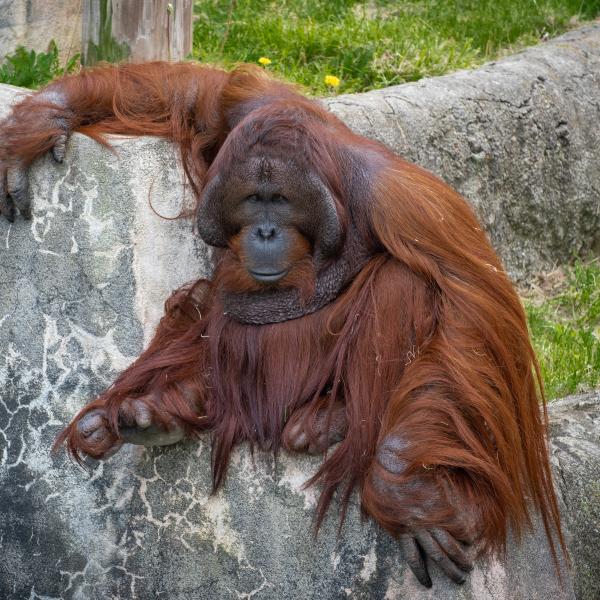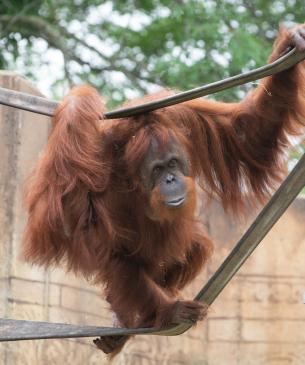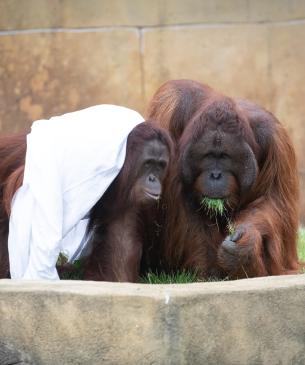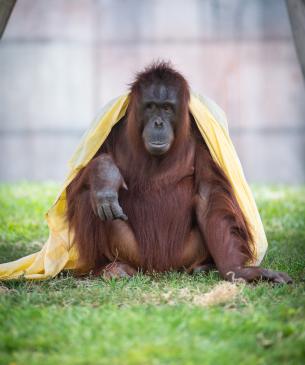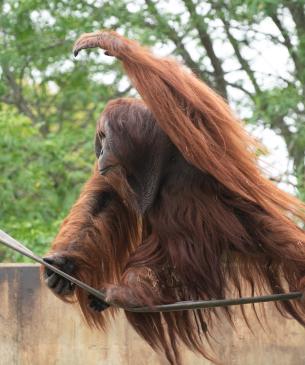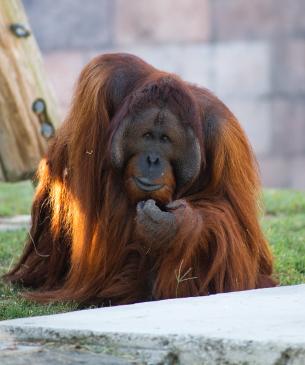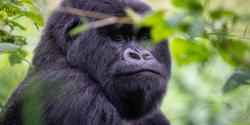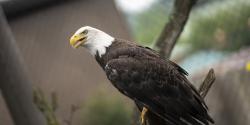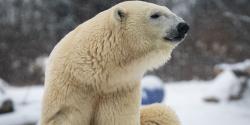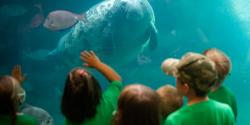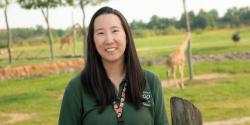"Orangutan" means "person of the forest" in the Malay language. They share approximately 97 percent of the same DNA as humans.
As the largest tree-dwelling or "arboreal" mammals on Earth, orangutans have impressive arm spans. A male orangutan can stretch his arms up to seven feet wide from fingertip to fingertip!
Located in the Australia & the Islands region
Scientific Name: Pongo pygmaeus
Conservation Status: Critically Endangered
Size: Standing height of 4 to 5 ft.
Weight: Males range from 220 to 240 lbs. and females range from 120 to 130lbs.
Median Life Expectancy: Males:29.4; Females:37.7

